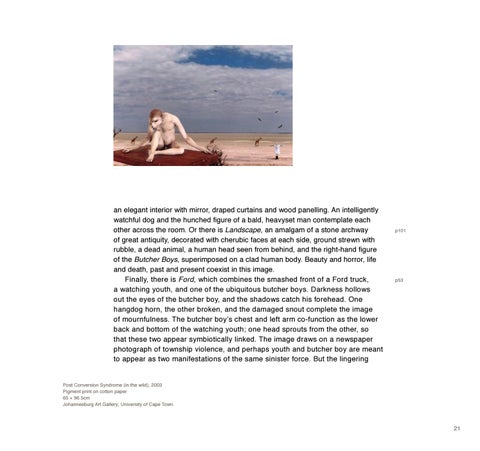an elegant interior with mirror, draped curtains and wood panelling. An intelligently watchful dog and the hunched figure of a bald, heavyset man contemplate each other across the room. Or there is Landscape, an amalgam of a stone archway of great antiquity, decorated with cherubic faces at each side, ground strewn with rubble, a dead animal, a human head seen from behind, and the right-hand figure of the Butcher Boys, superimposed on a clad human body. Beauty and horror, life and death, past and present coexist in this image. Finally, there is Ford, which combines the smashed front of a Ford truck, a watching youth, and one of the ubiquitous butcher boys. Darkness hollows out the eyes of the butcher boy, and the shadows catch his forehead. One hangdog horn, the other broken, and the damaged snout complete the image of mournfulness. The butcher boy’s chest and left arm co-function as the lower back and bottom of the watching youth; one head sprouts from the other, so that these two appear symbiotically linked. The image draws on a newspaper photograph of township violence, and perhaps youth and butcher boy are meant to appear as two manifestations of the same sinister force. But the lingering
p101
p53
Post Conversion Syndrome (in the wild), 2003 Pigment print on cotton paper 65 Ă— 96.5cm Johannesburg Art Gallery; University of Cape Town
21
